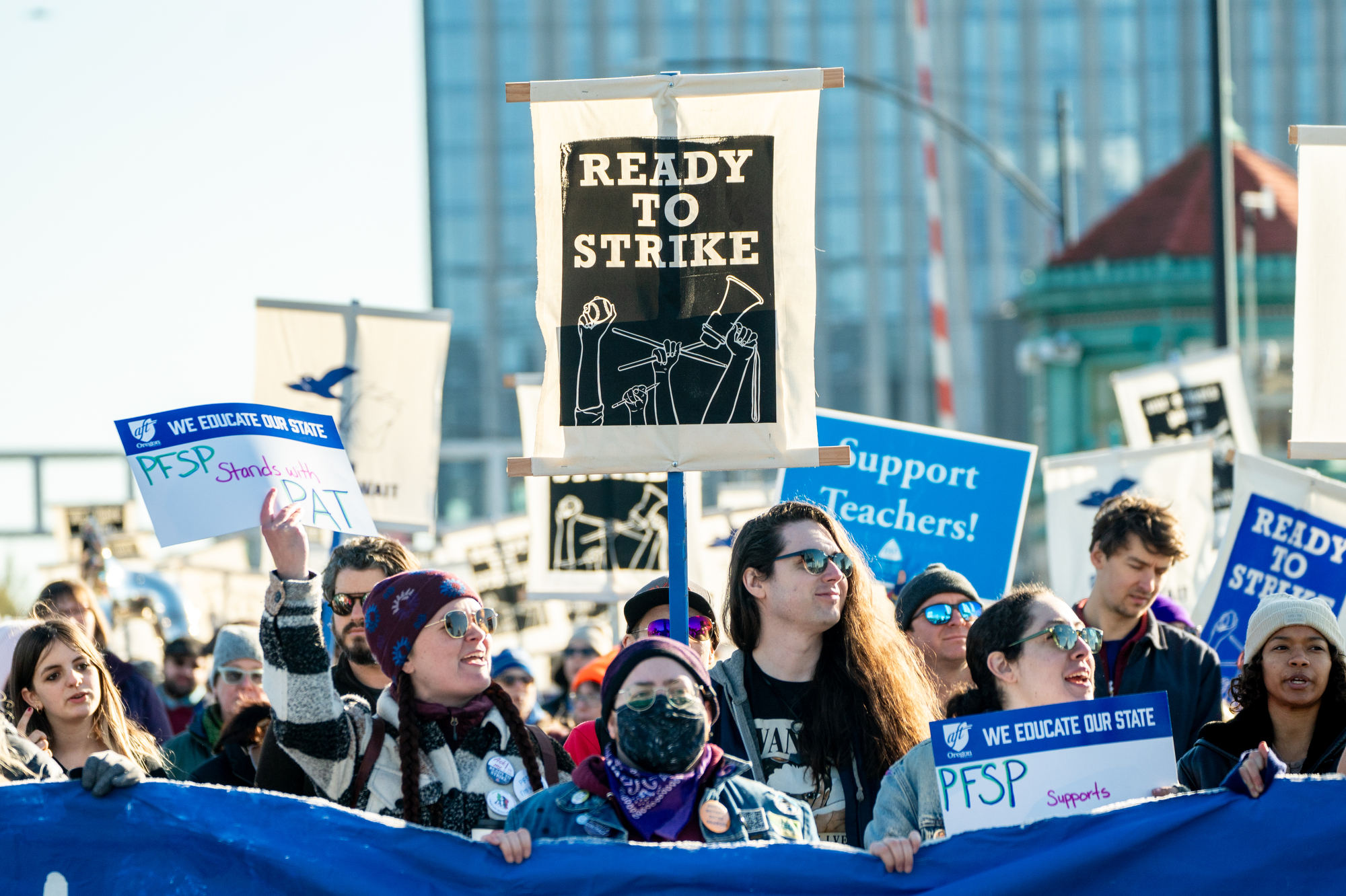Portland Public Schools teachers have rejected the district’s final offer and initiated a strike that has resulted in the closure of all 81 schools.
This historic strike follows a 10-month deadlock between the district and union leaders, who failed to reach a consensus on basic budget matters. The duration of the strike remains uncertain, with estimates ranging from three days to two weeks. Teachers who do not return to work by mid-November will lose their health insurance for December.
The major point of contention lies in the substantial gap of at least $200 million between the teachers’ demands and the district’s financial constraints. This disparity may lead to layoffs, reduced instructional days, school closures, or a combination of these measures. Negotiations are set to resume on Friday, resulting in the closure of schools on Thursday as well. Friday was already scheduled as a day off for students, designated as a teacher professional development day.
The teachers’ union argues for significant raises to keep pace with inflation, smaller class sizes to better address students’ academic and emotional needs in the aftermath of the pandemic, and more planning time to accommodate varying achievement levels.
To pass, any contract must be approved by a majority of the union’s approximately 3,500 teachers and the school board, which aims to avoid plunging the district into a severe financial shortfall.
In an attempt to resolve the impasse, the district has offered cost-of-living adjustments that would increase teacher salaries by almost 11% over three years, along with $3,000 bonuses for first-year and special education teachers. Although this represents a slight improvement from the district’s initial offer of a 7.5% raise, it still falls significantly short of the union’s demands. Additionally, the district recently proposed an additional 40 minutes per week of planning time for elementary school teachers, up from the current 320 minutes specified in the existing contract and the previous offer of 400 minutes.
On Tuesday, the union negotiators did not present a counterproposal, according to Jonathan Garcia, chief of staff to Portland Superintendent Guadalupe Guerrero.
The district’s latest offer would necessitate programmatic cuts in the current budget. Renard Adams, the district’s director of research, accountability, and assessment, stated that specific details on these cuts are still unclear but could include a freeze on hiring central office staff and reductions in outside contracts and purchasing.
Adams remarked, “We have already proposed a cost of living increase that exceeds our revenue growth. We understand that the union believes it is inadequate. However, we cannot responsibly accept their proposed 23% increase. Both the class size limits and the union’s planning proposal would require us to hire over 500 new teachers, despite declining enrollment.”
Angela Bonilla, president of the Portland Association of Teachers, has not yet responded to text messages seeking comment. However, a group of Markham teachers attended Adams’ press conference. Among them, Grace Groom, a second-grade teacher and member of the district’s Community Budget Review Committee, believes that more funding can be allocated to address the union’s priorities.
Groom asked, “Why isn’t more money going directly to schools for the benefit of students?” She pointed out that central office staffing has increased despite declining enrollment.
District negotiators clarified that many central office employees serve multiple schools, including campus safety team members, dyslexia support specialists, and restorative justice coordinators.
This week, Governor Tina Kotek urged both parties to continue negotiations at the bargaining table instead of resorting to a strike. Governor Kotek has been in active communication with Superintendent Guerrero and Garcia. She also spoke with Bonilla and dispatched her legislative director, Bob Livingston, to mediate between the two sides at the Oregon Education Association’s Tigard headquarters.
Elisabeth Shepard, spokesperson for the governor, stated, “She is pushing for an agreement that ensures fair treatment of educators, prioritizes funding for classrooms, and keeps students in school.”
Picket lines and rallies are scheduled to take place early on Wednesday at most Portland Public Schools campuses.
Other school districts in Oregon, including Salem, Hillsboro, and Medford, are also confronting challenges with their respective teachers unions. However, legislative officials are cautious about providing bailouts to Portland Public Schools. Despite receiving a record $10.2 billion in funding for the current biennium, schools statewide still fall short of the approximately $100 million required to maintain existing programs.
The ongoing strike in Portland has garnered national attention. Becky Pringle, president of the National Education Association, arrived on Tuesday and intends to join the teachers on the picket line on Wednesday. Progressive-learning cities on the West Coast, such as Oakland, Seattle, and Los Angeles, have previously experienced significant teacher strikes, resulting in substantial concessions.
However, these concessions have come at a cost.
For instance, Seattle teachers secured cost-of-living adjustments of 14% over three years and other priorities, but the district now faces a $100 million budget shortfall and is preparing to close several schools.
Similar to urban school districts nationwide, Portland Public Schools is grappling with declining enrollment due to low birth rates and high housing costs. The pandemic-induced closures further exacerbated this decline as some families opted for homeschooling or private schooling.
— Julia Silverman; [email protected]


